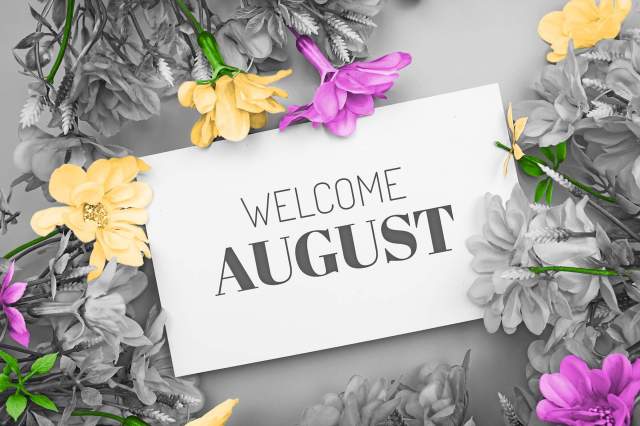
August Wasn’t Always This Way
August is a month that knows its way around a calendar. Not only was it not initially the eighth month, but it also didn’t always have 31 days. The Roman calendar borrowed heavily from complicated Greek lunar calendars when it first began; the Roman year originally had 10 months containing 304 days total, with the new year commencing on the first of Martius, the month we now call “March.” Sextilis (which eventually became August), originally the sixth month, had 29 days. Subsequent reforms added two additional months, bumping some month names to spots that no longer agreed with their new position in the calendar. (For example, “September” means “the seventh month,” but it is now the name of the ninth.)
Some of these inconsistencies remain. Julius Caesar (namesake of the month July) instituted further calendar reforms, eliminating leap months and declaring that most years contain 365 days (except for leap years). When the Julian calendar was introduced in 45 BCE, Sextilis got 31 days. Rome’s first emperor, Julius’ great-nephew Augustus Caesar, renamed Sextilis “August” — by then the eight month — in honor of himself in 8 BCE.

August Begins With Lammas
“After Lammas Day, corn ripens as much by night as by day,” or so goes the saying. In the British Isles and northern Europe, August is a month for bringing in the harvest of summer. The first of August is the holiday of Lammas, a Cross-Quarter Day that marks the halfway point between the summer solstice and the autumnal equinox. The Celts celebrated Lammas as Lughnasadh, while the early Christians transitioned the pagan rites into a “loaf mass,” where villagers took loaves baked with grains from the first harvest to be blessed.

August Is Filled With Stars
The so-called “dog days of summer” aren’t named that because of hot dogs, but because between July 3 and August 11, the sun rises and sets with Sirius. The brightest star visible from Earth, Sirius is part of the constellation Canis Major (“Greater Dog”) and is often referred to as “the Dog Star.” (August 26, however, is National Dog Day … so every dog does have its day in August.) Sirius was worshipped as the goddess Sopdet in ancient Egypt, as its position in the night sky predicted the flooding of the Nile River.
Sirius isn’t the only star show happening in the August sky — the Perseids meteor shower is at its peak, and the Kappa Cygnids also make an appearance.
More Interesting Reads

August Is Filled With Famous Days
August is an eventful month, packed with anniversaries both celebratory and sad. The Genoese explorer Christopher Columbus and a crew of 90 men set sail from Spain on August 3, 1492, arriving in North America in October of the same year. The world gasped on August 22, 1911, the morning after Leonardo da Vinci’s masterpiece the “Mona Lisa” was stolen from the Louvre. (It was recovered two years later.) On August 6 and August 9, 1945, U.S. forces detonated two atomic bombs over the Japanese cities of Hiroshima and Nagasaki — the only use of nuclear weapons in war. And in 1963, more than a quarter of a million people gathered in Washington, D.C., to hear Reverend Martin Luther King Jr. give his “I Have a Dream” speech on August 28.

August Is a Big Month for Volcanoes
Although modern research may change the date, history has long recounted that the apocalyptic eruption of southern Italy’s Mount Vesuvius (near present-day Naples) occurred on August 24, 79 CE. The volcano’s fury killed between 13,000 and 16,000 people, completely destroying the towns of Pompeii and Herculaneum. Much better documented is the August 26, 1883 eruption of Krakatoa, in Indonesia’s Sunda Strait. Although the island of Krakatoa was uninhabited, the resulting fallout and tsunamis caused the deaths of around 36,000 people, making it one of the deadliest volcanic events in recorded history. In August 2022, Iceland’s Fagradalsfjall volcano erupted near Reykjavik. And olive-green peridot, one of August’s birthstones, is forged in the fires of volcanoes.

European Cities Put Out the “Gone Fishin’” Signs in August
Europeans enjoy a generous amount of vacation time, and August is a favored time for residents of major cities to escape overheated streets — and the tourists who crowd them. August also coincides with school holidays, so locals go on vacation (preferably to the shore or cooler mountains) right along with foreign visitors. While some services will remain open to cater to tourists, many of the best restaurants and shops will simply shut their doors so staff can go off on their own happy holidays.












